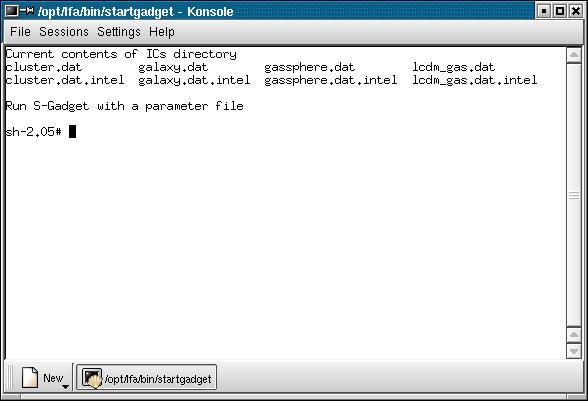

A code for collisionless and gas dynamical cosmological simulations
Version : 1.1
Author(s) : Volker Springel (vspringel@cfa.harvard.edu) , Naoki Yoshida (naoki@mpa-garching.mpg.de)
License : GPL
Website : http://www.mpa-garching.mpg.de/gadget/
Installs from Open Source Astronomy for Linux cd 3
Disk space required for installation is 23.32 Mb

The following printable documents will be installed :
The code can be used for plain Newtonian dynamics, or for cosmological integrations in arbitrary cosmologies, both with or without periodic boundary conditions. The modeling of hydrodynamics is optional. The code is fully adaptive both in space and in time.
The main reference for numerical and algorithmic aspects of the code is the paper `GADGET: A code for collisionless and gas-dynamical cosmological simulations', Springel, Yoshida & White, 2000, submitted to New Astronomy (see preprint at astro-ph/0003162). In the following, this paper will be frequently referenced, and I recommend reading it before you attempt to use the code.
Features
Hierarchical multipole expansion (tree method) for gravitational forces (geometrical oct-tree, Barnes&Hut-style)
Optional periodic boundary conditions (Ewald summation technique)
Smoothed particle hydrodynamics with fully adaptive smoothing lengths
Shear-reduced artificial viscosity
Individual timesteps of arbitrary size for all particles
Work-load balancing and dynamic tree updates
Efficient cell-opening criteria
Highly efficient integrator in the linear regime of gravitational clustering
Flexible control of all code options by a free-format parameterfile
Portable, well documented code, relying only on standard language/communication features
High raw computational speed and good scalability